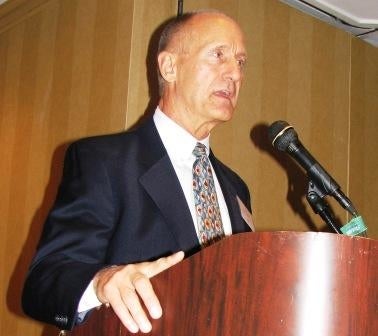Parochial planning town-by-town may have strong roots in New England, but a more regional perspective is needed for the economy to flourish, according to Robert Lang, a planning expert who spoke Thursday at the annual meeting of the 495/MetroWest Partnership.
“Regional identity is made up of sub-regions. You can get ahead of the curve if they all share economic development resources,” he said. Lang is co-director of the Metropolitan Institute at Virginia Tech in Alexandria, Va. He is also an associate professor in urban affairs and planning in Virginia Tech’s School of Planning and International Affairs.
Lang pointed to a move by the U.S. Census Bureau in 2005 to create larger metropolitan statistical areas based on commuter traffic as a reason why a more regional approach to planning is needed. He said the census lumps Boston, Worcester and Manchester, N.H., together and that the federal government uses these larger metro areas when funding infrastructure projects, particularly transportation projects.
But census categorization isn’t the only change afoot.
Many people want something different from development than traditional single-family homes, according to Robert Brustlin, president and CEO of the Watertown-based engineering firm Vanasse Hangen Brustlin, who was the second speaker of the morning.
While young people and some baby boomers want urban-style living with more dense housing and mixed-use developments, suburbia is resistant to those changes with zoning codes that are “not friendly at all,” he said.
The current development hiatus – caused by the recession — is an opportunity to develop a collective economic development vision for the region, he said.
“The partnership can help create the environment to create a vision and a clear economic development plan that would work much better in the region across all the towns,” he said.
The 495/Partnership is public-private organization that advocates for 32 communities along the I-495 corridor. It addresses transportation, water resources, workforce development, housing and permitting issues. Every year it issues an annual report that shows its progress on these issues at its annual June meeting.

